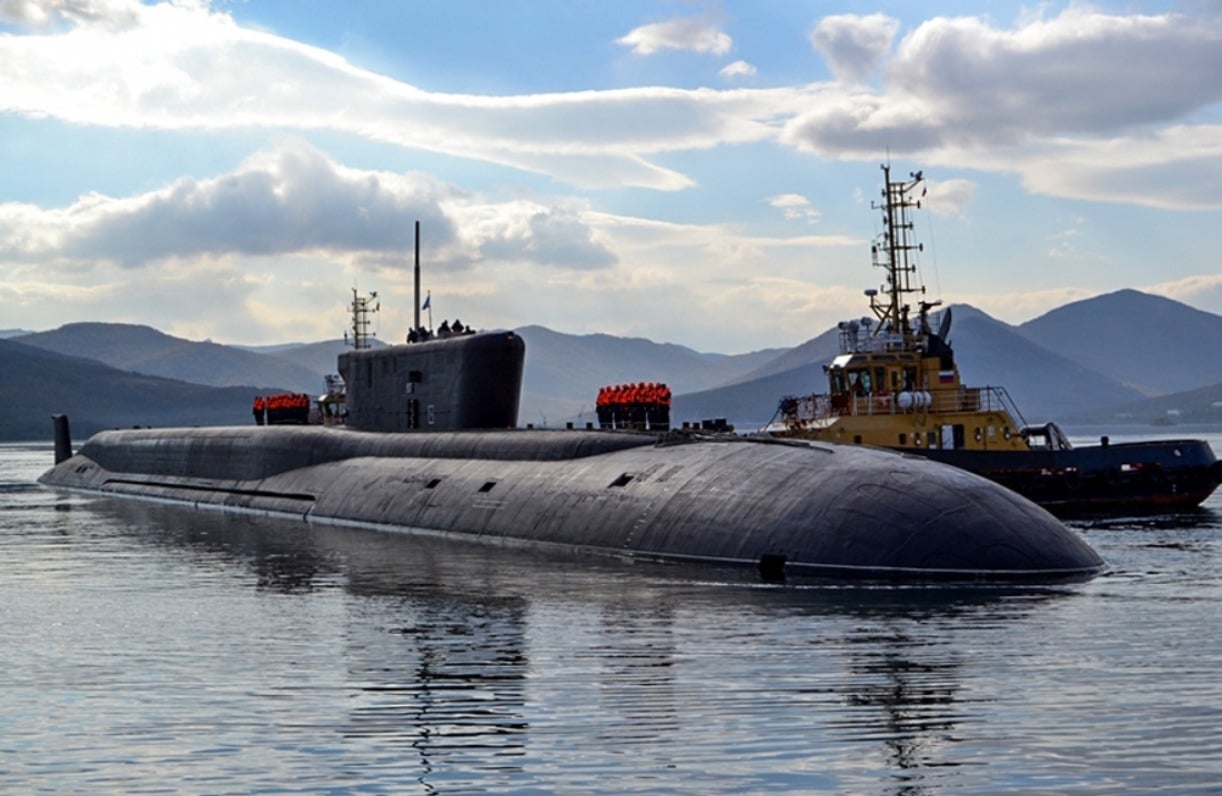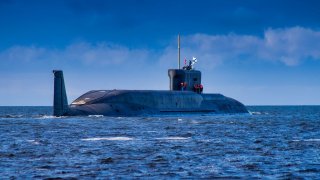Russia’s Borei-class Nuclear Submarines Have Just 1 Mission
The Borei-A class submarine is quieter and more technologically advanced than previous models, posing a considerable threat to Western forces. Russia plans to deploy these submarines in both the Northern and Pacific Fleets, enhancing its strategic presence and deterrence capabilities in key global regions.
Summary and Key Points You Need to Know: Russia's Borei-A-class submarines, particularly the newly launched Knyaz’ Pozharskiy, represent a significant advancement in the Russian Navy's capabilities. These submarines, equipped with 16 Bulava intercontinental ballistic missiles and advanced sonar systems, are designed for stealth and strategic nuclear deterrence.
-The Borei-A class is quieter and more technologically advanced than previous models, posing a considerable threat to Western forces. Russia plans to deploy these submarines in both the Northern and Pacific Fleets, enhancing its strategic presence and deterrence capabilities in key global regions.
-By the 2030s, Moscow aims to have a fleet of 12 Borei-class submarines. Their mission is to deter any potential foe and attack with nuclear weapons if called upon.
Russia's New Borei-A Submarines: A Growing Threat to Western Security
Russia is a submarine superpower. The Russian Navy has a handful of advanced submarine classes that give their rivals in the West real headaches. One submarine class in particular, the Borei class (notably the newer Borei-A class), is an impressive work of engineering as well as a lethal offensive platform. In February, the most recent Borei-A-class SSBN was launched from the Sevmash shipyard in Severodvinsk.
The new submarine is called Knyaz’ Pozharskiy. It is the fifth unit built in Russia’s Project 955A, or the Borei-A class.
What is the Borei-A-class?
Writing for Naval News, Tomasz Grotnik said, “The new Russian SSBN Knyaz’ Pozharskiy is expected to enter service by the end of 2024, and will join the Northern Fleet, as the second unit of its class (Project 955A).”
The Northern Fleet is directly engaged in deterring possible NATO involvement in the ongoing Ukraine War, as well as assisting the Russian military in that war. Indeed, one of the primary missions of the Northern Fleet is to ensure that the Baltic Sea, for example, remains accessible to Russians and inaccessible to NATO if a shooting war erupts between the two sides.
The primary armament of the Borei-A is 16 3M30 intercontinental submarine-launched ballistic missiles armed as part of the Bulava System. These boats have six 533 mm launchers for torpedoes, anti-submarine rockets, and bottom mines. A single 170MW OK-650W nuclear reactor powers the submarine. Indeed, Grotnik reports that Knyaz’ Pozharskiy is the first submarine in Russia’s fleet to be driven by “a pump-jet thruster.” This system “provides acoustic discretion.”
Further, the Borei-A has a spherical antenna at the bow of the boat which is part of the revolutionary MGK-600B Irtysh-Amfora-Borei sonar system.
Since these boats are quieter and more advanced than their predecessors, the Borei-A is a significant threat to the West – especially when taking their nuclear launch capabilities into account. If these subs are quieter and harder to notice by Western forces, that likely means the submarine’s primary mission of nuclear weapons launch from sea will be more successful than sister boats tasked with similar missions.

Going into the 2030s, Moscow plans to have a fleet of 12 Borei- and Borei-A-class submarines. This is in keeping with Moscow’s overarching modernization goals.
There’s an Even Newer Borei-class Submarine Being Built
Beyond the Northern Fleet, the Boreis are meant to serve in the distant Pacific Fleet. This makes sense, given that two of Russia’s major power competitors, the United States and China, have significant presences in the Indo-Pacific. Moscow also probably hopes to place some of their most advanced systems in those waters as a form of deterrence.
After all, the Russian Far East is sparsely populated and under constant territorial threat, including from China. Having a robust, advanced naval presence in these waters will help to deter possible aggressors against Russia’s exposed Far Eastern holdings.
Author Experience and Expertise: Brandon J. Weichert
Brandon J. Weichert, a National Interest national security analyst, is a former Congressional staffer and geopolitical analyst who is a contributor at The Washington Times, the Asia Times, and The-Pipeline. He is the author of Winning Space: How America Remains a Superpower, Biohacked: China’s Race to Control Life, and The Shadow War: Iran’s Quest for Supremacy. His next book, A Disaster of Our Own Making: How the West Lost Ukraine, is due October 22 from Encounter Books. Weichert can be followed via Twitter @WeTheBrandon.
All images are Creative Commons or Shutterstock.
From the Vault
Russia Freaked Out: Why the U.S. Navy 'Unretired' the Iowa-Class Battleships
Battleship vs. Battlecruiser: Iowa-Class vs. Russia's Kirov-Class (Who Wins?)


